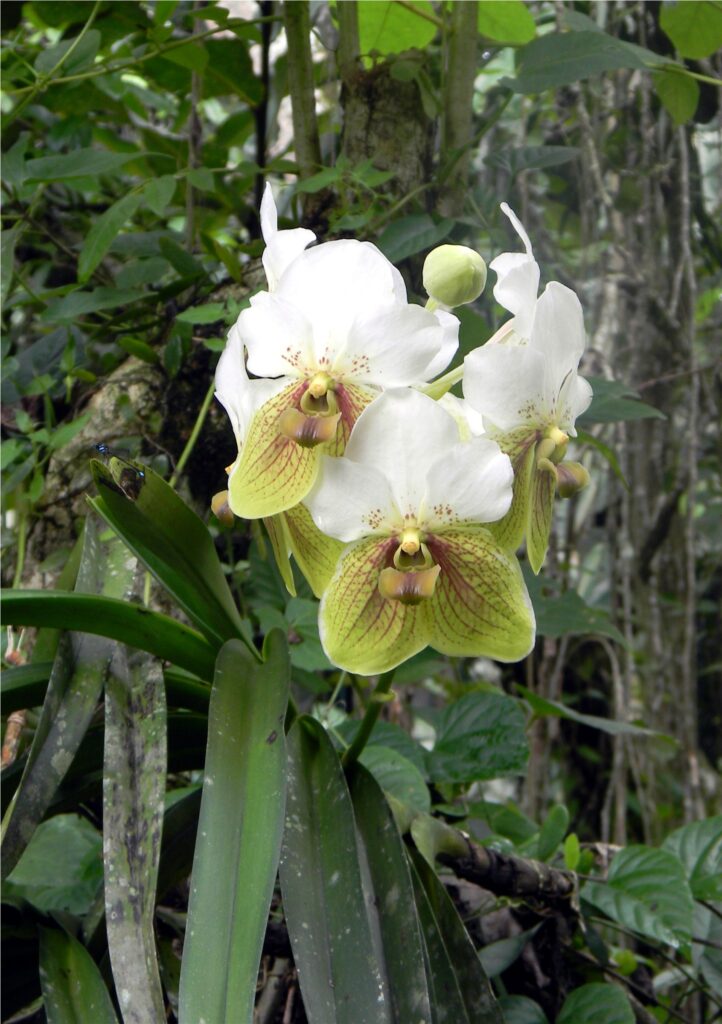Text and Photos by Henrylito D. Tacio
When it comes to biodiversity, Davao City is blessed. After all, it is partly home of Mount Apo, the country’s highest peak, and the Philippine eagle, the country’s bird icon.
Waling-waling touted to be the Queen of Philippine flowers, is endemic to Davao as well to Cotabato and Zamboanga. They used to be found in the trunks of dipterocarp trees at elevations below 500 meters inside Mount Apo. When it is grown at a high altitude, it bears flowers early. Over-collected, the plant is now considered rare in nature.
For almost a century, waling-waling disappeared in the Davao gardens. But thanks to Charita Puentespina, it has “returned” to its native home. Then a neophyte orchidist, Puentespina, successfully pioneered in mass-producing the waling-waling through embryo culture in 1985.
During the 48th Araw ng Dabaw, the first waling-waling seedlings in compost (community pots) were sold to the public, which in no time generated interest among hobbyists and commercial orchid growers.
Since then, the waling-waling has become a fixture in almost every garden in Davao. “The return of the waling-waling to every home garden in Davao and elsewhere in the country is one thing,” one noted author wrote. “It is another thing to see it bloom in its habitat at the foothills of Mount Apo.”
The waling-waling, named in “allusion to a moth in flight,” was discovered in 1882. Named after Henry Frederick Conrad Sander, a noted orchidologist, it is worshipped as “diwata” (fairy) by the native Bagobos.
Vanda is a genus of about 50 species of colorful orchids distributed from East Asia to Australia. In the science world, waling-waling is known as Vanda sanderiana. But today, it is called botanically as Euanthe sanderiana).
Unfortunately, the exotic waling-waling is almost on the brink of extinction. Waling-waling were harvested for commercial and decorative purposes, and their habitat was destroyed by deforestation.
“The waling-waling is almost extinct in the wild,” deplored Dr. Domingo Madulid, one of the country’s noted botanists. “Rarer varieties of this plant can only be found in expensive nurseries.”
The waling-waling is considered critically endangered under Appendix I of the Convention on International Trade in Endangered Species of Wild Fauna and Flora (CITES), an international treaty among governments to ensure that the survival of wild plants and animals are not threatened by their trade.

Waling-waling is the best orchid variety in the country, Madulid said. But most Filipinos didn’t know that it could be one of the biggest sources of dollars for the country. In the 1950s, the “systematic plunder” of wild plants, including orchids, started.
Madulid said that long before the country was sending maids to Singapore and Hong Kong, upland farmers had been despoiling the forests and selling rare orchid varieties, such as waling-waling, abroad.
Waling-waling is often used in hybridization. Thus, it is now in abundance in such countries as Singapore, Thailand, Hong Kong, and Hawaii.
“A seedpod may contain around 10,000 seeds, most of which will grow under the protected environment of the laboratory,” said a Philippine Star feature.
In 2004, a motion was filed in the House of Representatives to declare waling-waling as the country’s national flower, replacing the Sampaguita.
In 2013, a bill was passed by the Senate, declaring it as a national flower alongside the Sampaguita. “Our national symbols are vital to our identity as Filipinos. As we discover more about ourselves, we must also update the symbols that represent us,” said then-Senator Loren Legarda, co-sponsor of the bill.
“Orchid lovers all over the world consider the waling-waling as one of the most unique and beautiful native orchids in the world and that while some adore it, most Filipinos have forgotten its natural beauty,” said Edgardo Angara, the late senator who sponsored the bill.
The Department of Environment and Natural was ecstatic. By naming waling-waling as the country’s flower icon, it would “raise public consciousness on its rarity and boost efforts to conserve the flower,” said then Environment Secretary Ramon J.P. Paje.
“The waling-waling can best represent the splendor and uniqueness of Philippine biodiversity because it is considered the finest and most beautiful among all species of orchids in the country,” Paje explained.
However, House Bill 5655 was vetoed by then President Benigno Aquino III.
“A second national flower has the pernicious effect of creating confusion in the minds of the public and the academe,” Aquino said. “Moreover, declaring waling-waling orchid as the second national flower would have the effect of displacing the hallowed status of the sampaguita, a cherished national icon, as the primary symbol of Philippine culture and artistry.”
For the uninformed, Sampaguita is native to India and Arabia. It is also one of Indonesia’s national flowers.
Meanwhile, a lot of Filipinos are looking forward to seeing waling-waling blooming again in its original habitat at the foothills of Mount Apo.
But when that will happen, no one knows!

